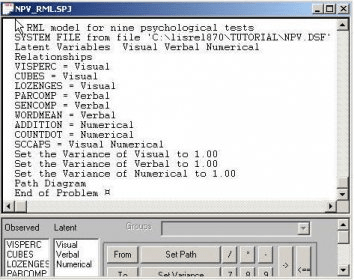

On the other hand, the volume written by Rex Kline represents one of the most comprehensive of available introductions to the application, execution, and interpretation of this technique.

For researchers keen to begin analyzing data quickly, this book is an invaluable resource that will speed one's introduction to SEM. Kevin Kelloway's book is directed at the researcher with little knowledge of structural equation modeling and is intricately linked to one of the more popular structural equation modeling programs, LISREL. Both are valuable, but differ in important ways. The two new books under renew are therefore timely. Individuals interested in acquiring skills in this technique must eider attend expensive training seminars or plow through technical books and manuals on their own. Indeed, most graduate programs provide no courses on SEM.

Despite the growing interest in and use of structural equation models, few individuals using these techniques have benefitted from any formal training. Proponents of the approach have virtually declared the advent of a statistical revolution, while skeptics worry about the widespread misuse of complex and often poorly understood analytic methods. Structural equation modeling (SEM) is one of the most rapidly growing analytic techniques in use today.


 0 kommentar(er)
0 kommentar(er)
